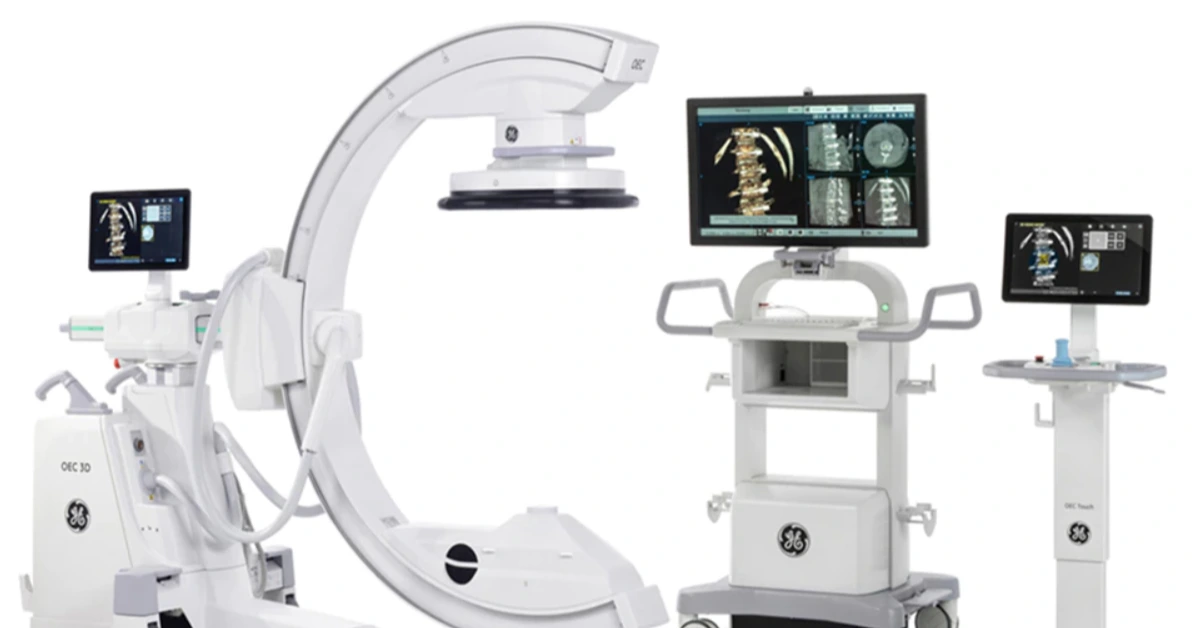
USA – GE HealthCare has expanded its OEC 3D mobile CBCT C-arm portfolio with new clinical applications designed to enhance imaging accuracy and efficiency during endoscopic bronchoscopy procedures in interventional pulmonology.
This upgrade promises to address a significant challenge in thoracic and pulmonary procedures: the mismatch between pre-operative CT images and actual nodule locations during surgery.
According to the company, the positioning of pulmonary nodules often shifts due to variations in respiratory patterns, patient positioning, and other factors, leading to a divergence between pre-operative CT scans and the patient’s actual anatomy at the time of the procedure.
These discrepancies make precise intraoperative imaging essential for effective interventions.
The OEC 3D mobile CBCT is lauded for its “imaging excellence” and versatility, supporting a wide range of procedures including neuro-spine, orthopedic trauma, and interventional interventions like bronchoscopy.
The latest update to the OEC 3D C-arm suite now includes the addition of augmented fluoroscopy to overlay 3D points of interest, as well as adjustable motorized 3D scans.
These enhancements allow clinicians to visualize both 2D and 3D images of the lungs, which is critical in diagnosing and navigating lung nodules during complex bronchoscopic procedures.
In addition to the visual improvements, the OEC 3D system now integrates with the Intuitive Ion robotic bronchoscopy system.
This expanded compatibility, along with augmented fluoroscopy, is a key milestone in advancing the diagnosis and treatment of lung nodules.
As explained by GE HealthCare, the ability to overlay 3D points of interest and access real-time 3D imaging during procedures is a breakthrough in interventional pulmonology.
“This integration marks a meaningful advancement in the diagnosis and treatment of lung nodules,” said Christian O’Connor, GE HealthCare’s Global GM for Surgery.
“We’re excited to continue building out our OEC ecosystem, providing interventional pulmonologists with a seamless experience in minimally invasive, robotic-assisted bronchoscopy procedures.”
Despite these significant technological advancements, the broader market impact may unfold gradually.
The adoption of these new capabilities will largely depend on the budgets of healthcare facilities and the resources required for training staff on the new system.
However, the integration of the OEC 3D with the Ion robotic system is likely to have a significant impact in facilities already using or planning to incorporate both technologies.
Launched in 2021, the OEC 3D mobile CBCT C-arm has already been recognized for its ability to deliver high-quality 3D and 2D imaging for a broad range of clinical applications.
In addition to the Lung Preset for optimizing airway imaging, the system’s seamless transition between 3D and 2D imaging provides clinicians with unparalleled flexibility in the bronchoscopy suite.
“As we continue to enhance our OEC ecosystem, our commitment to providing surgeons with access to the latest technologies remains stronger than ever,” O’Connor added.
XRP HEALTHCARE L.L.C | License Number: 2312867.01 | Dubai | © Copyright 2025 | All Rights Reserved